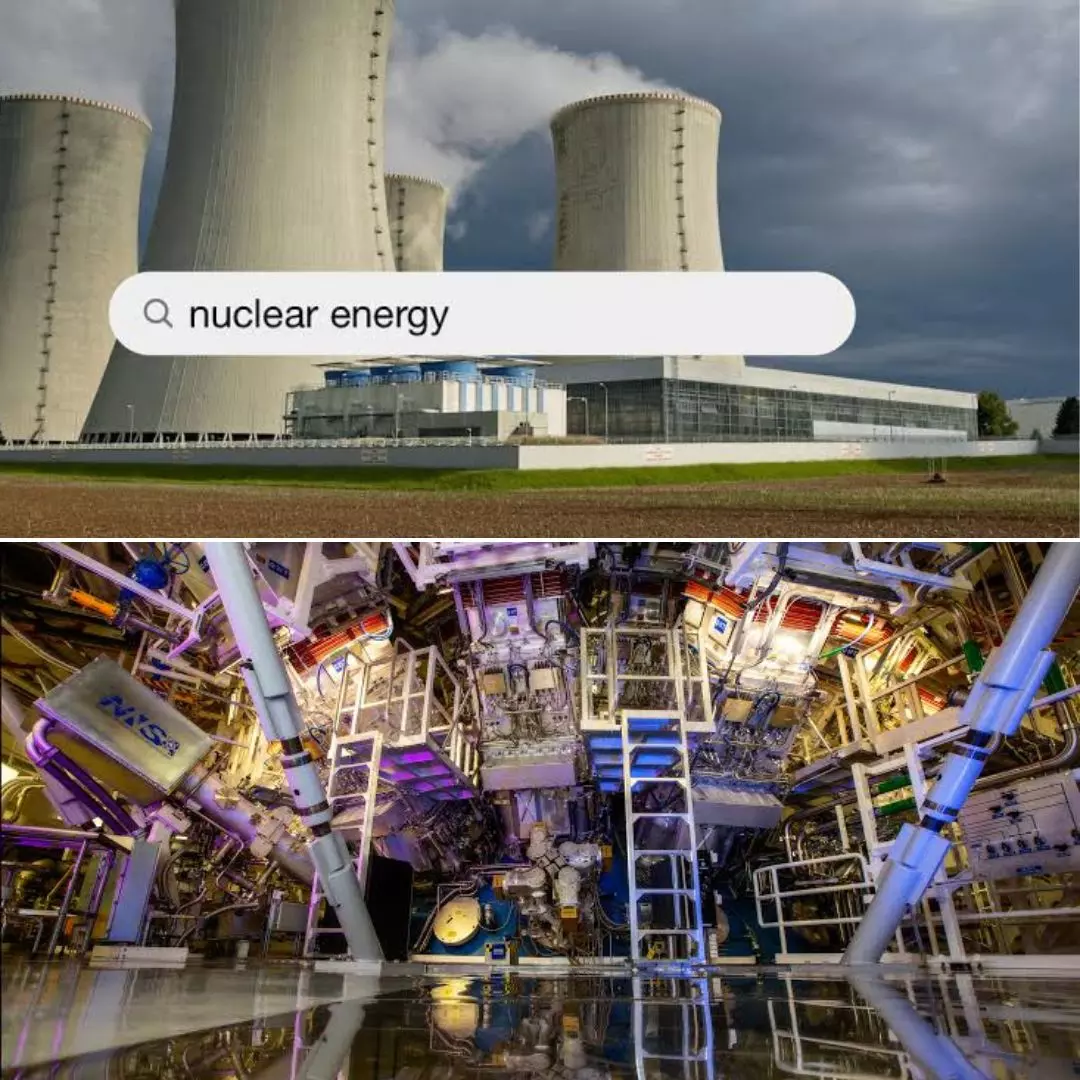
Image Credits: Unsplash and Lawrence Livermore National Laboratory
Know How US Researchers' Nuclear Fusion Experiments Make Major Breakthrough To Limitless, Clean-Energy
Writer: Laxmi Mohan Kumar
She is an aspiring journalist in the process of learning and unlearning many things. Always up for discussions on everything from popular culture to politics.
Others/World, 14 Dec 2022 6:33 AM GMT | Updated 14 Dec 2022 6:50 AM GMT
Editor : Shiva Chaudhary |
A post-graduate in Journalism and Mass Communication with relevant skills, specialising in content editing & writing. I believe in the precise dissemination of information based on facts to the public.
Creatives : Laxmi Mohan Kumar
She is an aspiring journalist in the process of learning and unlearning many things. Always up for discussions on everything from popular culture to politics.
Just one day before National Energy Conservation Day, an announcement by a US-based Laboratory on December 13 opened doors to a promising future that could replace fossil fuels and other non-environment-friendly energy resources.
December 14 marks the National Energy Conservation Day in India, and it presents the opportunity to discuss the many energy resources and their conservation for the long run. This year, the country can take a few lessons from the scientific research and breakthrough of the United States (US) scientists at the Lawrence Livermore National Laboratory (LLNL).
The Department of Energy, on December 13, announced a "major scientific breakthrough" from the LLNL, one of the several sites worldwide where researchers have been developing the possibility of harnessing energy from nuclear fusion. It's a technology that comes along with the potential to bring a significant shift from the consumption of fossil fuels that have been major contributors to climate change. Here's how these scientific developments phased out and are gradually building for a cheap and carbon-free energy source.
What Is Nuclear Fusion?
Many supporters have considered nuclear fusion a clean, abundant and safe energy source over the years. It was proposed as a solution for people to eventually break past their dependency on coal, crude oil, natural gas and other hydrocarbons that has been driving a global climate crisis.
Nuclear fusion is the same reaction that powers the sun and other stars, and it was found to provide a cleaner energy alternative. The reaction is said to happen when two light nuclei fuse to form a single heavier nucleus. As the entire mass of that single nucleus is significantly less than the mass of the two original nuclei, some leftover energy would be released in the process.
Scientists have studied this process for a long time and have tried to replicate the process on Earth since the 1930s. This makes the breakthrough one of the historical findings in the scientific space of study.
How Would Nuclear Fusion Benefit The World?
In scientific circles, nuclear fusion is often described as the "holy grail" of energy production. Physicists have attempted to recreate the process for decades as it promises a 'potential source of near-limitless clean energy.'
A New Indian Express report quoted a professor of energy and society at the University of California, Daniel Kammen, stating that nuclear fusion offers the possibility of "unlimited" fuel if the technology can be made commercially viable.
Current efforts of scientists are focused on fusing a pair of hydrogen isotopes, deuterium and tritium. The elements required for this can easily be found in the abundant seawater. Additionally, recreating the process does not produce as much radioactive waste as that of nuclear fission. However, experts believe that there is still a long way to go before energy from nuclear fusion powers homes. The recent landmark achievement by LLNL is a step forward toward this limitless resource.
How Did The US Scientists Make The Breakthrough?
The basic strategy behind energy production is to take pairs of light atoms, fuse them together, and generate energy that can be utilised. One way through which scientists have tried recreating this fusion is with a tokamak device, a vacuum chamber that turns fuel into a superheated plasma where controlled thermonuclear fusion power can occur.
The Livermore lab, however, has used a differential technique with the researchers firing a 192-beam laser at a small capsule filled with deuterium-tritium fuel. An August 2021 experiment on these grounds produced about 1.35 megajoules of fusion energy, after which subsequent experiments were conducted, and ways to improve the quality of the fuel capsule and the lasers' symmetry were recorded. Most importantly, the process produced no greenhouse gas emissions, therefore not contributing to climate change.
LLNL director Dr Kim Budil said: "This is a historic achievement… over the past 60 years, thousands of people have contributed to this endeavour, and it took real vision to get us here." So far, no experiment has produced more energy than the amount that has been put in to make it work, and while the energy generated is small, it points toward a bigger promise of a fusion-powered future.
Also Read: Should India Pursue Nuclear Energy Or Not? : An Insightful Interview With Mr Sundar Rajan
 All section
All section














